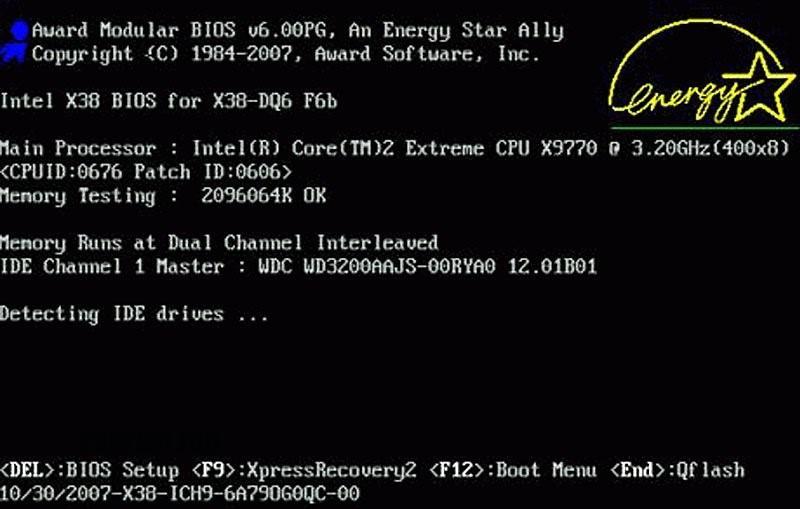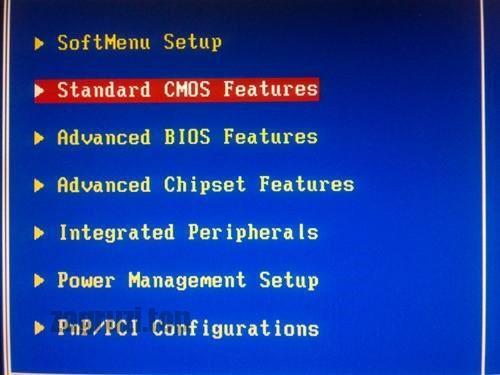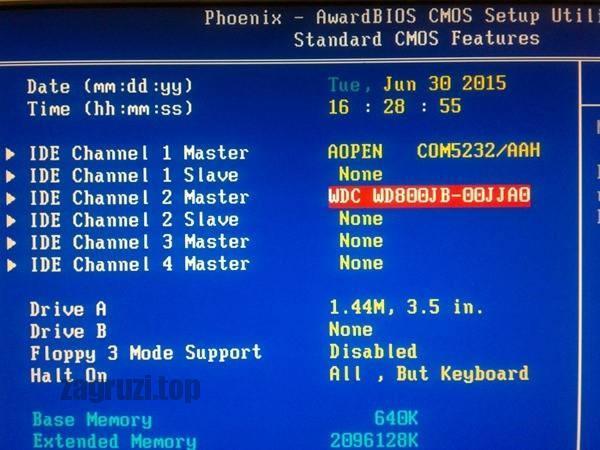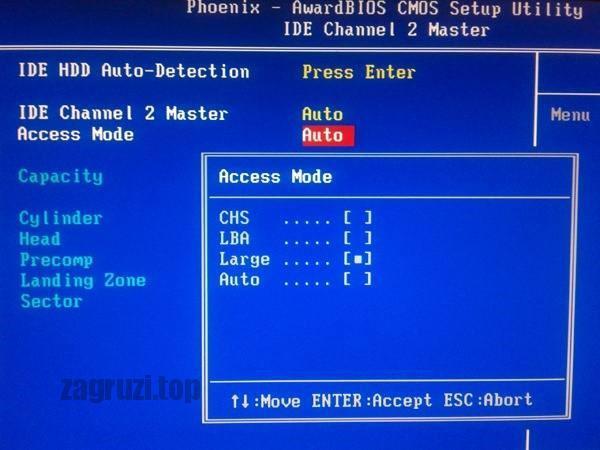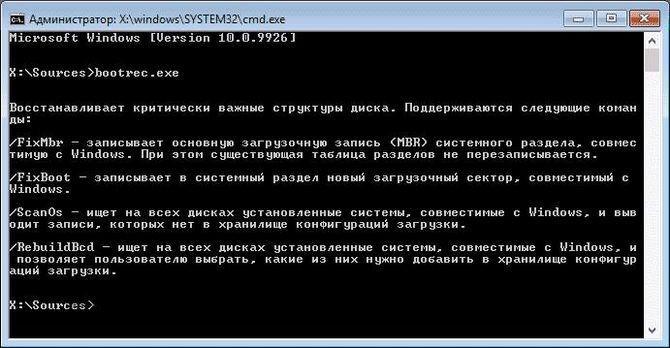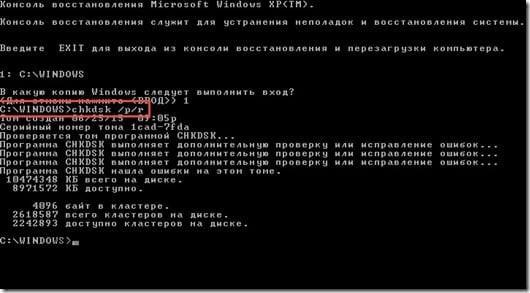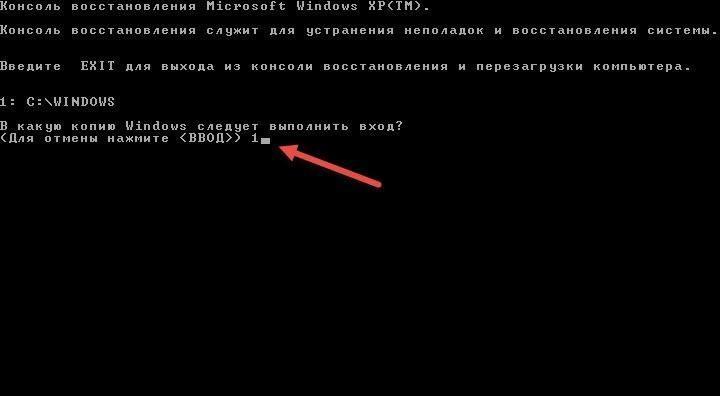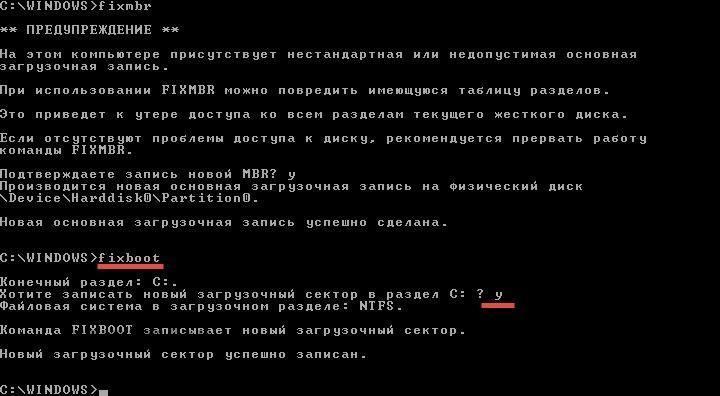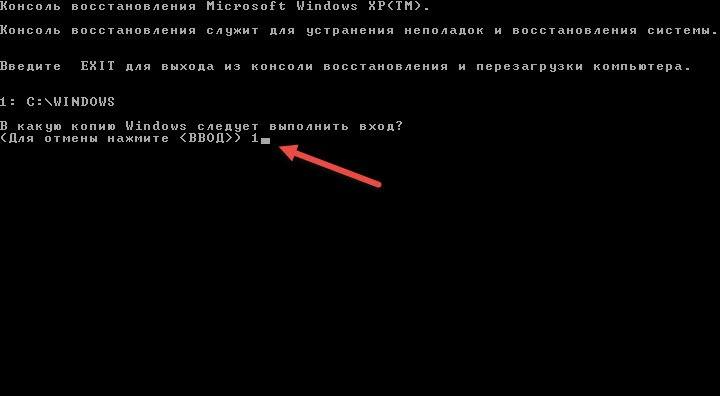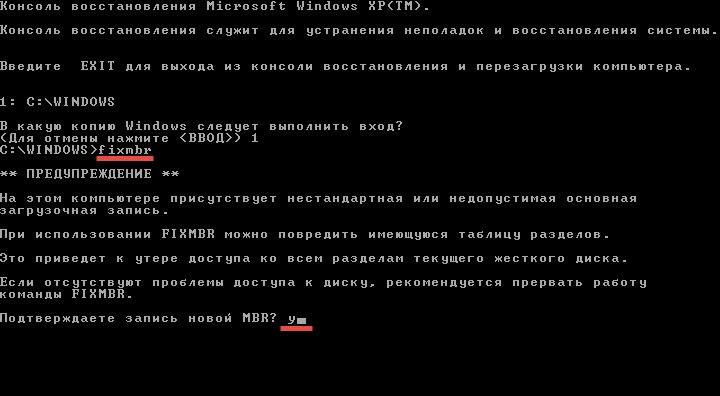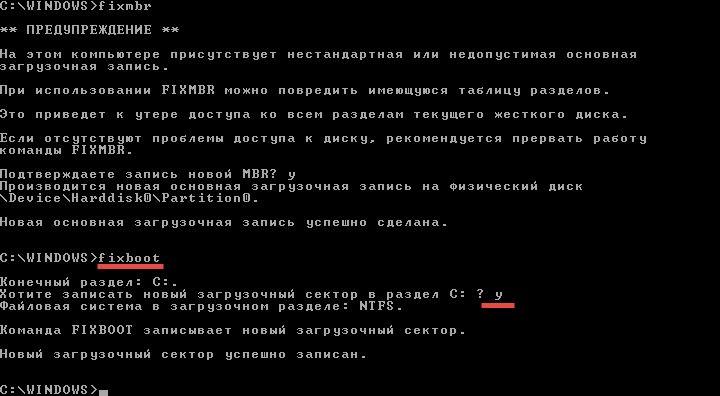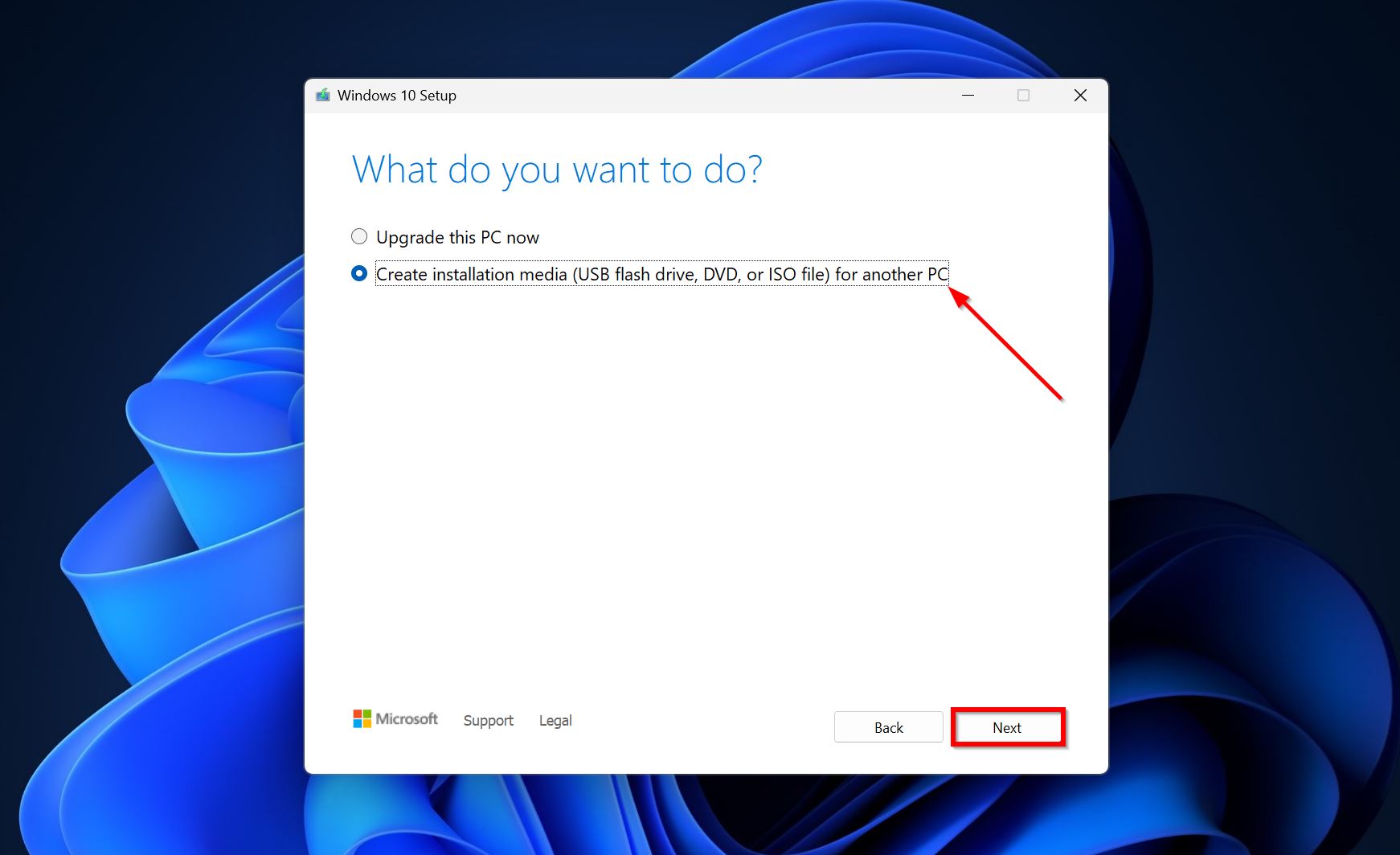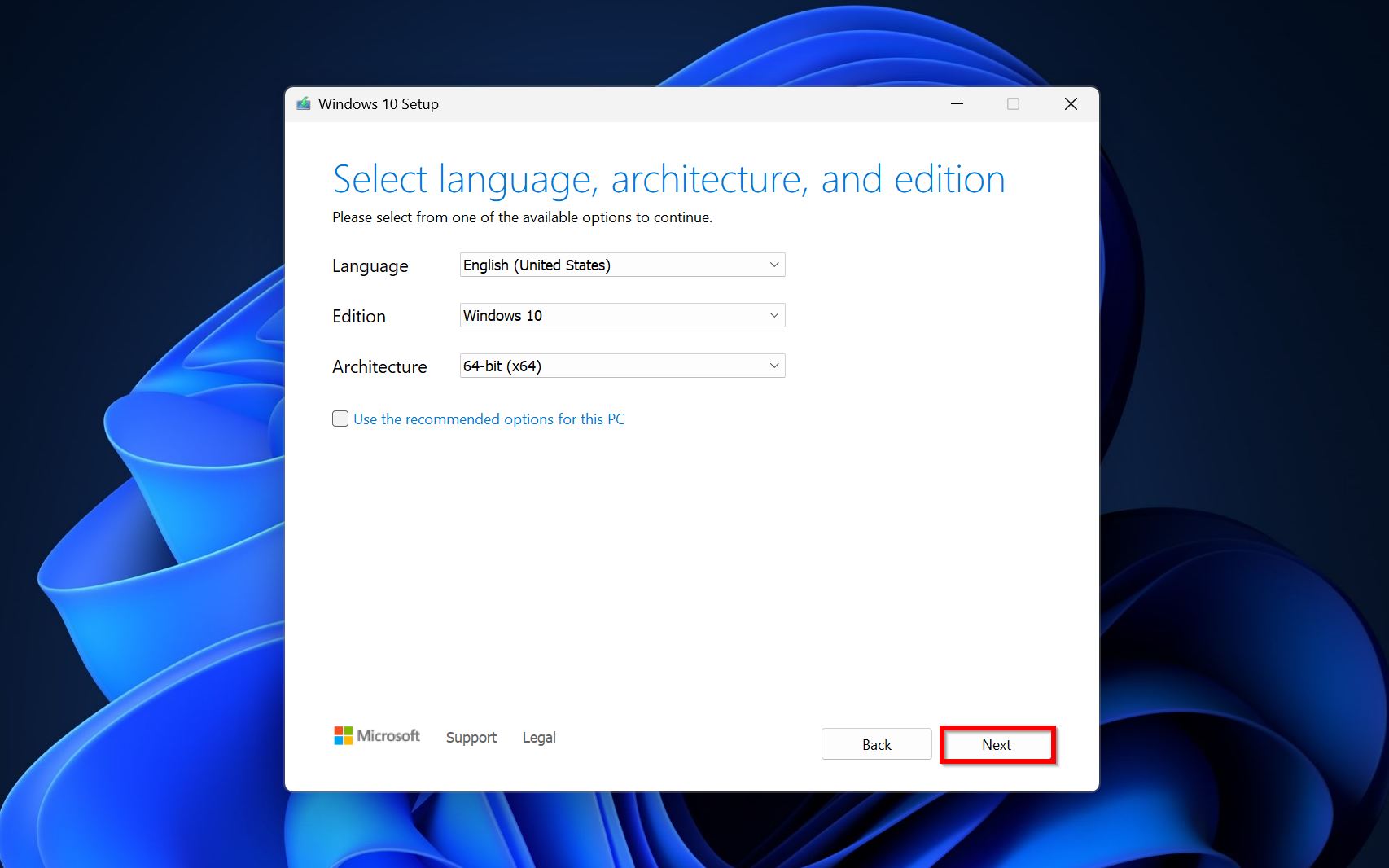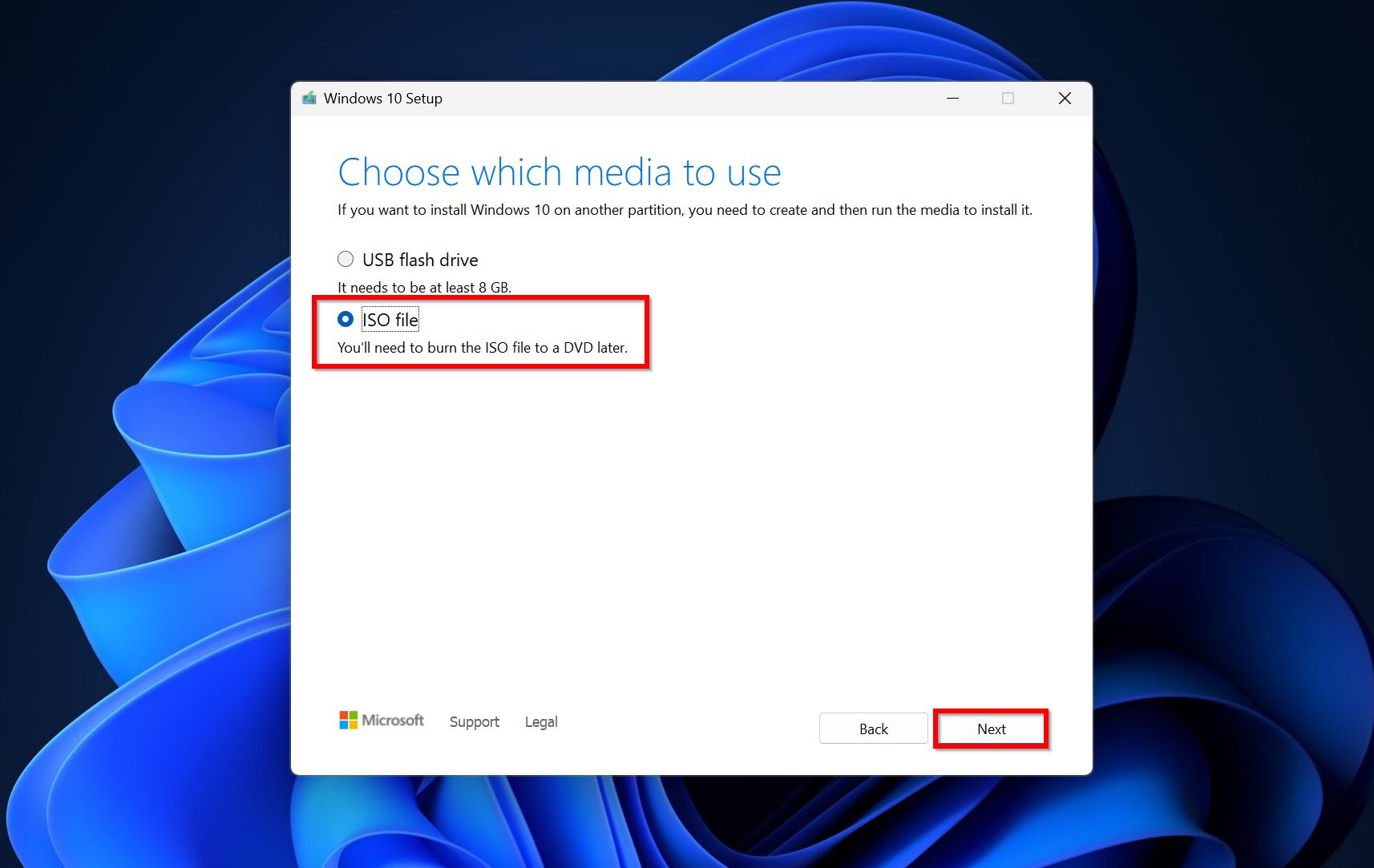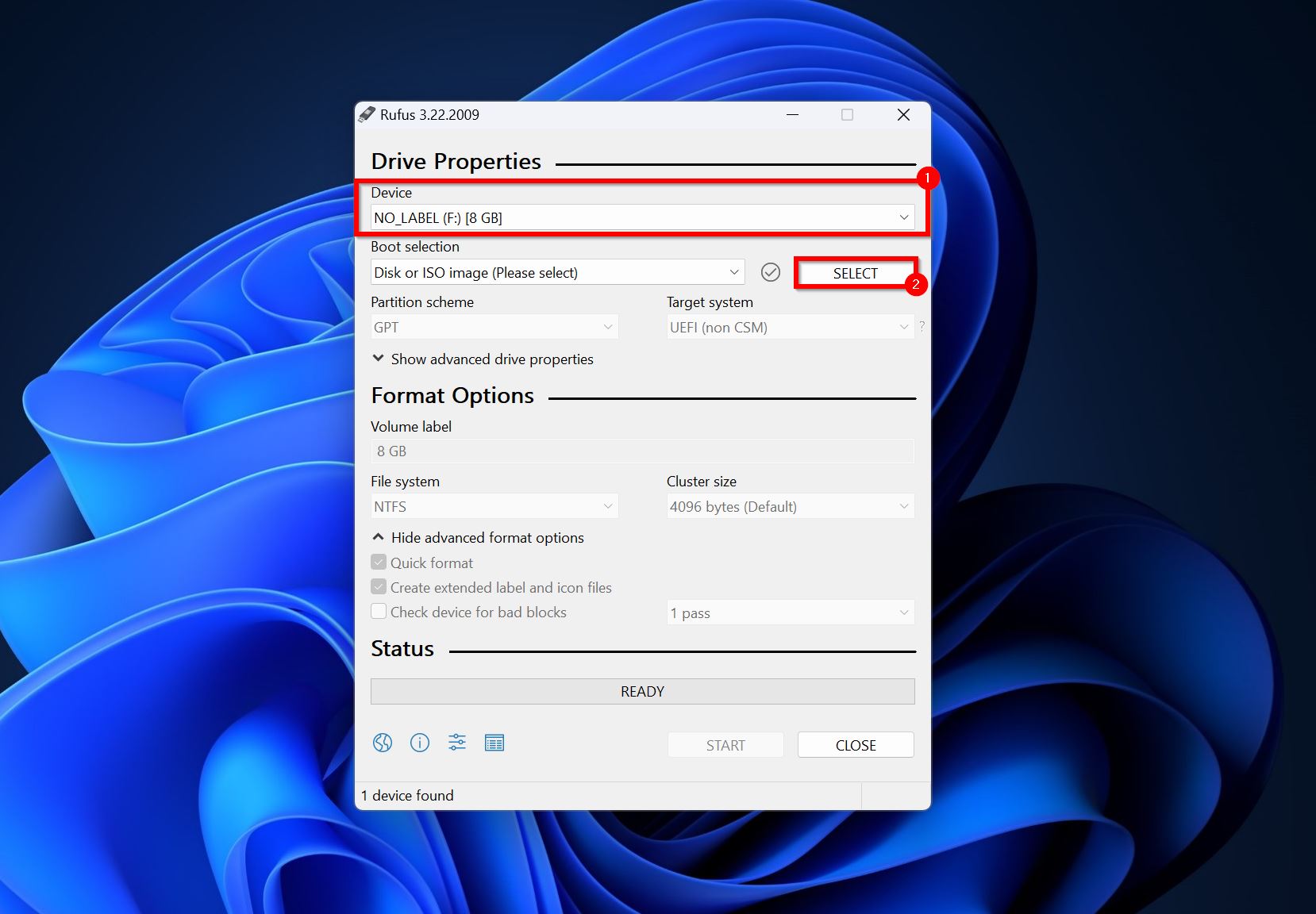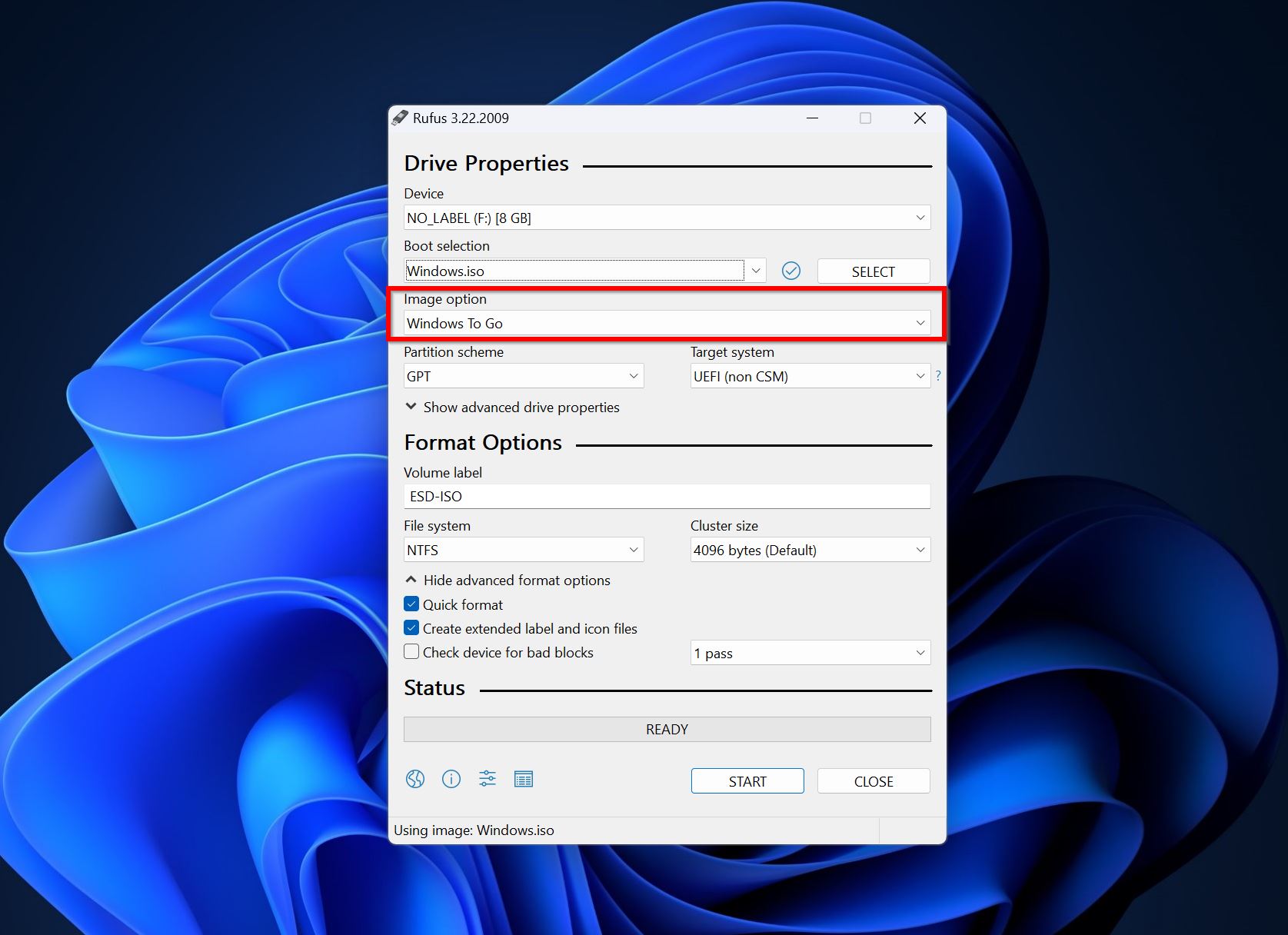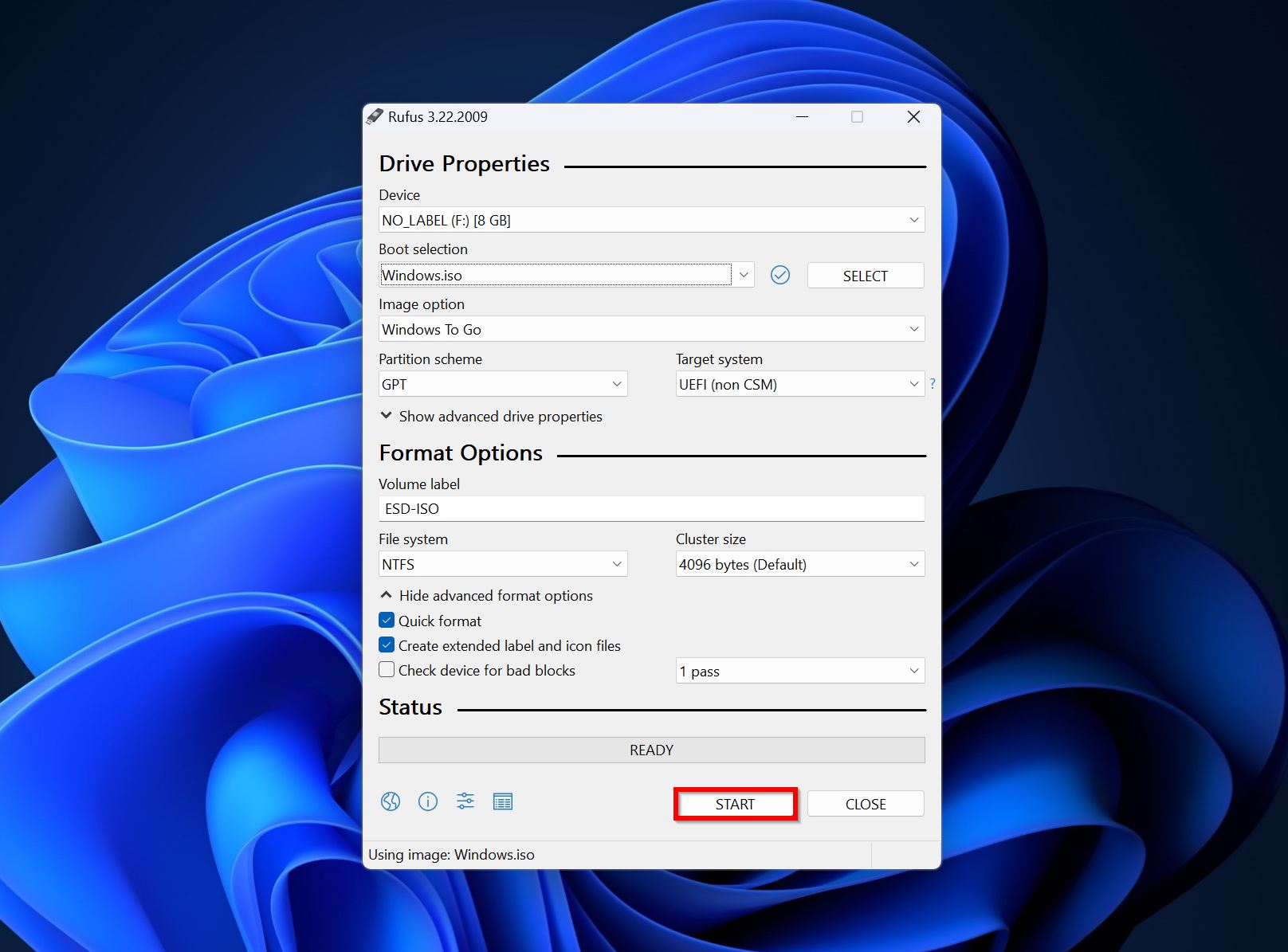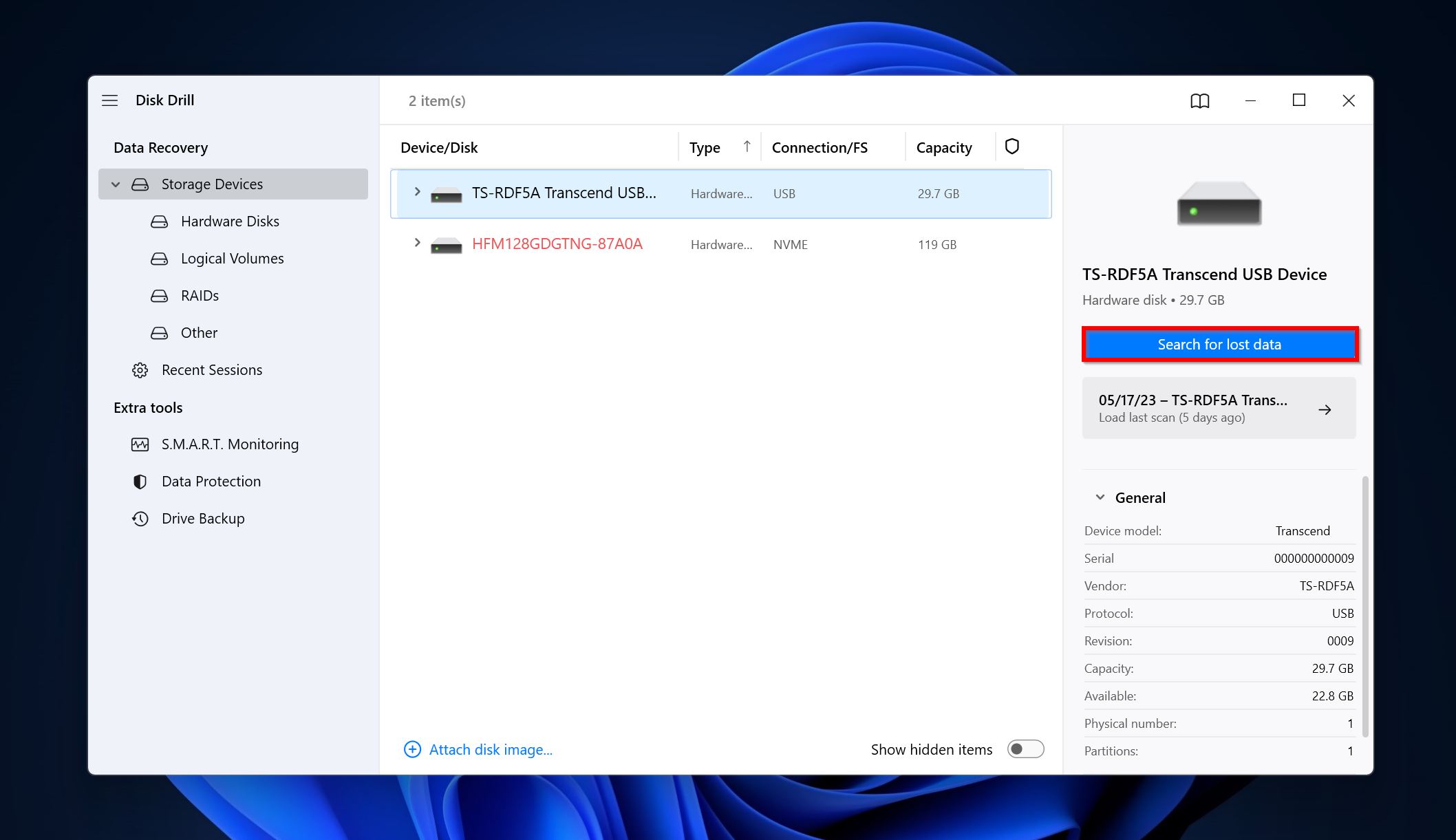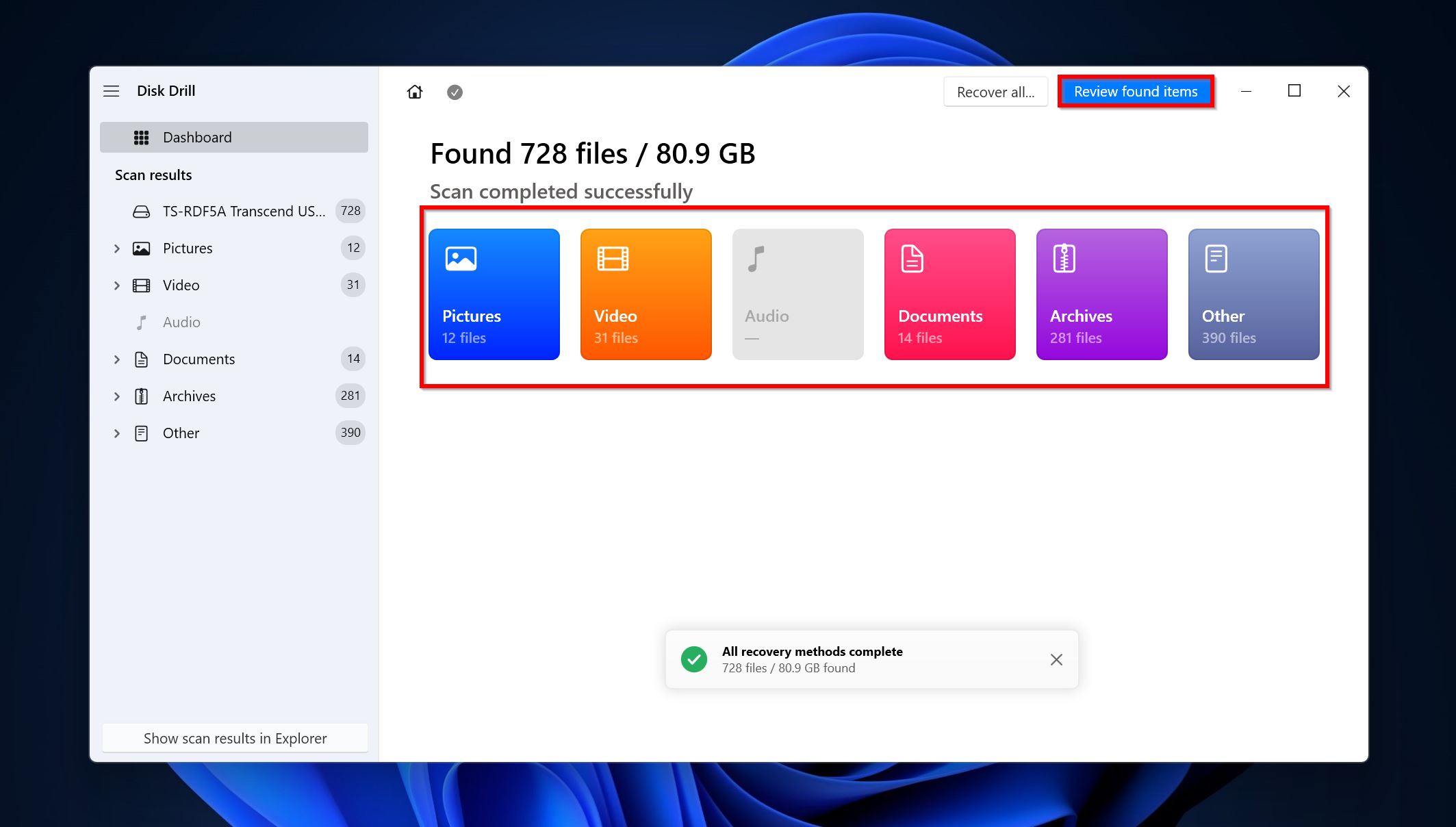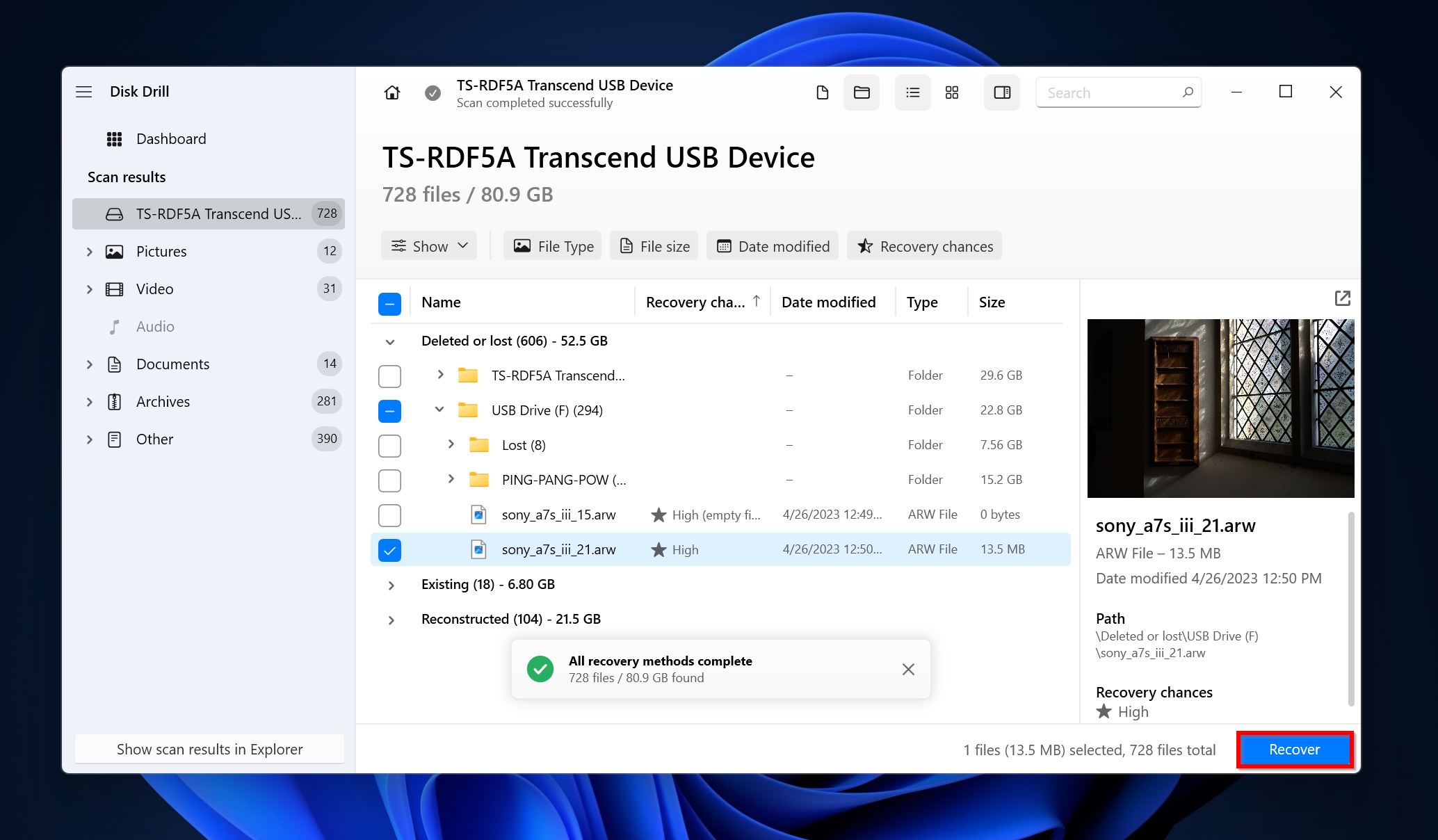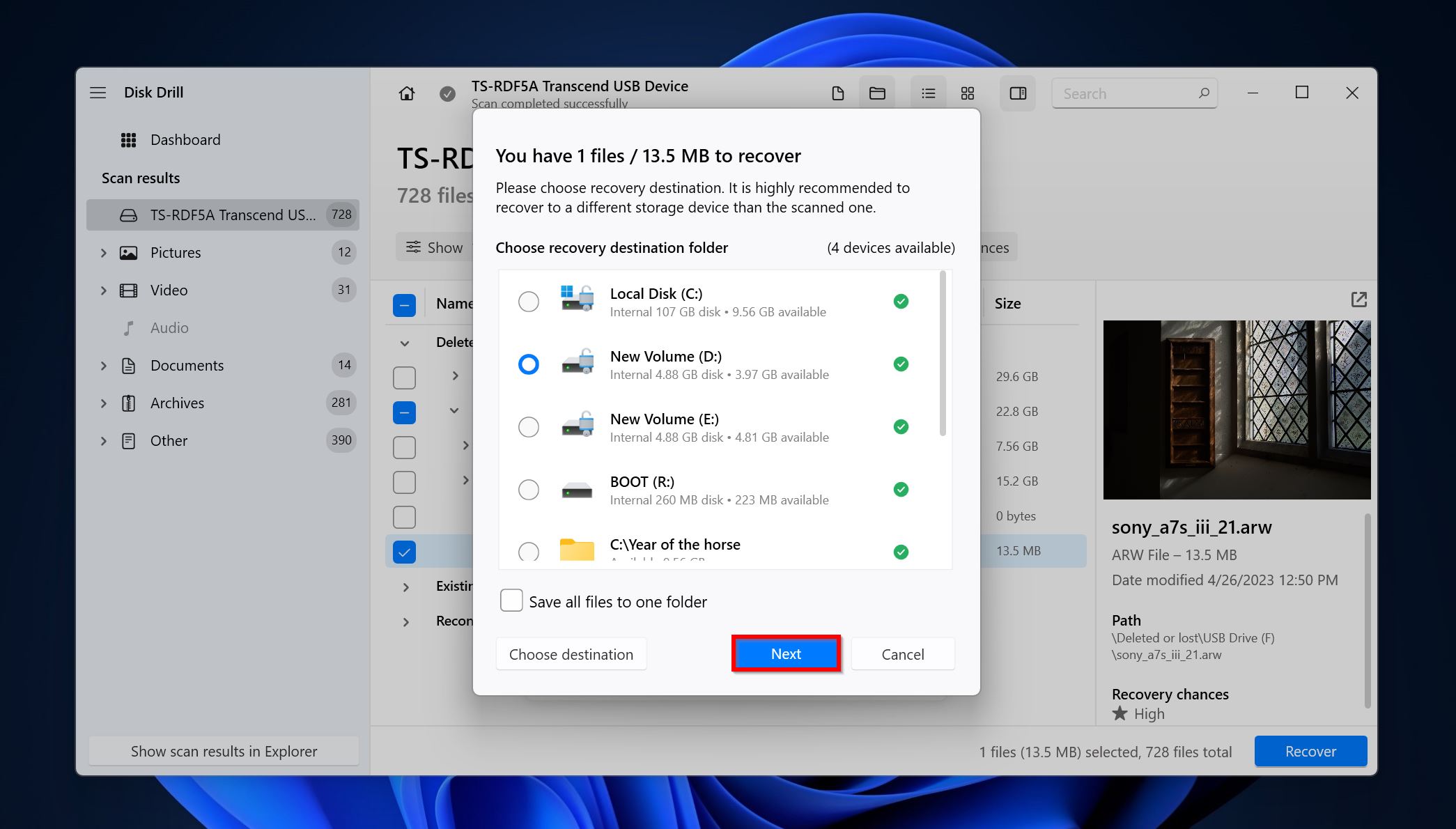
Представленная далее инструкция подойдёт для компьютеров под управлением Windows XP, 7, 8 и 10.
Содержание
- Причины возникновения ошибки
- Варианты решения проблемы
- Проверка настроек BIOS
- Использование командной строки
- Восстановление повреждённого загрузчика
- Видеоинструкция
- Заключение
Причины возникновения ошибки
Как показывает практика, ошибка «loading operating system» обычно появляется при загрузке или установке операционной системы. Чаще всего с неполадкой сталкиваются компьютеры с устаревшей на данный момент Windows XP. Спровоцировать возникновение сбоя может резкое выключение питания, перезагрузка машины при открытых программах, а также ряд других причин:
- Устаревший BIOS, не поддерживающий жёсткий диск текущего объёма. Например, компьютер оснащён хранилищем на 128 ГБ, а версия BIOS настолько древняя, что попросту не может работать с таким количеством памяти.
- некорректно выставленные настройки в BIOS для установленного жёсткого диска;
- Повреждение раздела диска, отвечающего за загрузку операционной системы. Windows пытается получить доступ к необходимым для запуска файлам, а сделать этого не может из-за проблем с винчестером. Чаще всего это происходит из-за резких скачков напряжения, заражения компьютера вирусами и ошибок записи.
На самом деле это не все причины, но среднестатистическому пользователю достаточно знать только их. Теперь давайте разберёмся, что делать при появлении этого сбоя.
Варианты решения проблемы
После прочтения большого количества материала был составлен список методов, позволяющих устранить рассматриваемую ошибку. Рекомендуем следовать от способа к способу до окончательного решения проблемы.
Проверка настроек BIOS
Первым делом необходимо убедиться в том, что диск с загрузочным файлом операционной системы находится в приоритете. Выполнить проверку правильно поможет данная пошаговая инструкция:
- Переходим в BIOS. Для этого полностью выключаем, а затем заново включаем компьютер. Во время запуска нужно уловить момент, когда на дисплее висит много надписей. Если удастся приглядеться, то внизу экрана можно будет увидеть название кнопки, отвечающей за открытие BIOS. Чаще всего это клавиши: «Delete», «F1» и «F2».
- После входа в BIOS ищем раздел «Standard CMOS Features» и переходим в него. Кстати, всё перемещение и управление осуществляется исключительно с помощью клавиатуры.
- Теперь находим нужный диск и нажимаем [knopka]Enter[/knopka].
- На экране должен появиться раздел с настройками. Мы нажимаем по пункту «Access Mode» и из предложенных вариантов выбираем «Large».
- После этого нажимаем по клавише [knopka]F10[/knopka] для сохранения изменений и выхода из BIOS.
Зачастую после выполнения данной инструкции ошибка исчезает, но если этого не произошло, то переходите к следующему методу.
Кстати, перевод рассматриваемого сбоя такой: «ошибка загрузки операционной системы».
Использование командной строки
Новые Windows начиная с седьмой версии оснащены специальной функцией – «Bootrec». Она помогает исправить рассматриваемый сбой через командную строку. Если хотите сделать всё правильно, то воспользуйтесь пошаговой инструкцией:
- Запускаем командную строку. Сделать это можно через меню «Пуск», введя в строке поиска запрос «cmd».
- В командную строку поочерёдно вписываем следующие запросы: bootrec /FixMbr; bootrec /ScanOs; bootrec /rebuildBcd; bootrec /FixBoot. После каждого из них нажимаем [knopka]Enter[/knopka] и проверяем информацию на экране.
- После успешного завершения процедуры перезагружаем компьютер.
Что касается Windows XP, то здесь для получения доступа к компьютеру нужно попытаться выполнить запуск с загрузочного диска. Сначала переходим в BIOS и определяем CD/DVD в качестве источника загрузки системы. После этого начинаем установку операционной системы и во время этого процесса нажимаем по клавише [knopka]R[/knopka]. Данное нажатие запустит процесс восстановления Windows XP, где необходимо выбрать версию загружаемой системы (естественно, при условии, что их несколько). Затем вводим следующую команду chkdsk /P/R, а после нажимаем [knopka]Enter[/knopka].
Теперь ожидаем окончания процедуры сканирования, а после вводим команду Exit и перезагружаем компьютер. Судя по отзывам пользователей, данный метод действительно заслуживает внимания.
Восстановление повреждённого загрузчика
Довольно часто проблема возникает из-за повреждённого загрузчика операционной системы. Вернуть компьютер в рабочее состояние поможет следующая инструкция:
- Переходим в консоль восстановления системы. Как писалось ранее, для этого на этапе загрузки нужно нажать по клавише [knopka]R[/knopka]. После этого поступит запрос на выбор системы для восстановления. В большинстве случаев необходимо ввести запрос «1», и нажать по клавише [knopka]Enter[/knopka].
- Теперь вписываем команду fixmbr и нажимаем по клавише [knopka]Enter[/knopka]. На экране должно выскочить оповещение о том, что есть вероятность повреждения таблицы разделов. Игнорируем данное предупреждение и запускаем процедуру кнопкой [knopka]Y[/knopka]. Заметим, что регистр в данном случае соблюдать необязательно.
- Затем прописываем команду Fixboot. На экране появится сообщение с текстом: «Хотите сделать запись нового загрузочного диска в раздел С:?». Как и в предыдущем случае подтверждаем процедуру клавишей [knopka]Y[/knopka].
В конце добавляем команду Exit, а после переходим в BIOS и изменяем приоритет загрузки с флешки или USB на диск.
Обратите внимание, что все команды вводятся латинскими символами.
Видеоинструкция
Чтобы узнать альтернативные способы устранения ошибки рекомендуем посмотреть видеоинструкцию, расположенную чуть ниже.
Заключение
Мы подробно рассказали о том, как действовать при появлении ошибки «loading operating system», а это значит, что наша статья подошла к концу. Надеемся, вам удалось убрать неприятный сбой быстро и без особых трудностей. А если что-то пошло не так, то задавайте свои вопросы в комментариях. Редакция нашего сайта постарается ответить на них как можно скорее.
( 15 оценок, среднее 2.73 из 5 )
Ошибки и неисправности Задать вопросНаписать пост
Нередко пользователи Windows (особенно Windows XP) могут сталкиваться с проблемой, когда, пытаясь загрузить операционную систему (ОС), возникает надпись «error loading operating system» на черном фоне. Перезагрузка компьютера (ПК) в данном случае обычно не помогает. Нужно знать, что означает данная ошибка, какими способами можно её исправить, о факторах, которые вызывают подобную проблему.
Что за ошибка, из-за чего возникает
Обычно «Error loading operating system» в Windows XP, 7, 10 возникает при попытке запустить ПК, в момент установки или загрузки уже установленной системы. Перед пользователем появляется чёрный экран с единственной строкой с сообщением о данной неисправности (можно перевести как «ошибка загрузки ОС»), и загрузка прекращается. Перезагрузка ПК, как правило, приводит только к повтору ситуации.
Факторами возникновения ошибки могут стать:
- Старая версия БИОС не поддерживает имеющийся размер HDD, т. е. объём диска чересчур большой для текущего BIOSа;
- Неправильные настройки диска, прописанные в БИОС;
- Загрузочный раздел HDD повредился (по причине, например, перепадов напряжения, ошибок записи, воздействия вирусов). В этой ситуации ОС не способна получать доступ к требуемым файлам и вынуждена приостановить загрузочный процесс.
Проверка БИОС
Сначала потребуется осуществить проверку последовательности загрузки BIOS, удостоверившись в том, что HDD является приоритетным. В ином случае, надо поменять порядок вручную. Делается это так:
Использование командной строки
В современных Windows (начиная с 7 версии) имеется команда «Bootrec». Чтобы устранить ошибку загрузки операционной системы нужно набрать определённые операторы в командной строке, далее нажимая «Enter» после каждого вводим:
- bootrec /FixMbr;
- bootrec /ScanOs;
- bootrec /rebuildBcd.
- bootrec /FixBoot.
Потребуется перезагрузка ПК.
В Windows 7 следует нажать комбинацию Shift+F10 в окне выбора языка операционной системы.
В Виндовс 8 и 10 нужно выбрать «Восстановление системы», в окне установки.
Восстановление загрузчика
Иногда проблему вызывает поврежденный загрузчик. Исправить ситуацию можно следующим образом:
- Потребуется сделать загрузку с установочного диска и зайти в командную строку. Выбрать Windows, которую нужно восстановить. Далее надо нажать «Enter».
- Затем вводится команда «fixmbr». Отобразится надпись, сообщающая о том, что вероятно повредились таблицы разделов. Но, так как Виндовс не способна загрузиться, можно ввести «Y», чем будет подтверждён пуск процесса.
- Прописать команду Fixboot. Снова возникнет сообщение: «хотите произвести запись нового загрузочного сектора в раздел C:?». Нужно нажать «Y» и подтвердить.
- Прописав «Exit», нужно снова войти в БИОС и изменить приоритет загрузки с привода на HDD, и перезагрузить ПК.
Reader Interactions

What Causes the “Error Loading Operating System” Issue on Windows
It can be confusing to pinpoint what caused your PC to display the “Error loading operating system” message because there’s no other info provided. However, the table below outlines the most common reasons behind this error:
| Reason | Description |
| 💻 An outdated or improperly configured BIOS | A pre-2000 motherboard’s BIOS typically won’t support newer hard drives with large capacities. On newer motherboards, it’s likely that the BIOS settings are not configured to work with the hard disk. Luckily, both these problems can be resolved with a simple BIOS update or a trip to the BIOS settings. |
| ⚙️ Corrupted Master Boot Record (MBR) | The first sector on your computer’s HDD contains the MBR, which stores the necessary information required for Windows to boot. A corrupt boot sector is a common culprit behind numerous operating system boot errors, including this one. Windows has in-built utilities that can help you repair a corrupted MBR. |
| 📋 Incorrect boot order | The boot order determines which drive contains the OS and should be used to boot. If it’s set incorrectly in the BIOS, Windows won’t boot, and you’ll get the “Error loading operating system” message. This typically happens when you have multiple drives attached to your PC. You can rectify an incorrect boot order using the Boot Sequence settings in the BIOS. |
| 🚫 Missing system boot files | In addition to the MBR, other system files need to be loaded during the boot process. Missing system boot files can be one reason why the operating system could not be loaded. |
| 🪟 Incorrectly installed GRand Unified Bootloader (GRUB) when dual-booting Windows and Linux | It can be tricky to dual-boot Linux and Windows, and any mistakes while setting up the dual-boot can lead to the “Error loading operating system” error. Installing GRUB to MBR, instead of in EFI, is usually the cause. While fixing dual-boot issues is beyond the scope of this article, here is an excellent resource related to Ubuntu and Windows dual-boot installations. |
| ☁️ Misconfigured VMware machine | Many users report facing operating system boot errors after converting a physical machine to a virtual one using the VMware converter. This usually happens if the Entire disk option was not selected during conversion. |
How to Recover Data When the Operating System Doesn’t Load
When it comes to operating system boot issues, your primary concern should be your data. Sometimes, the only way to solve the error loading operating system problem, is to perform a clean reinstallation of Windows. You will lose your files in this case. Furthermore, the culprit behind the error could be disk corruption, which can impact all the files on your drive.
Luckily, it’s entirely possible (and easier than you think) to recover your data from a hard drive that won’t boot. How? Using third-party data recovery software. We recommend you do this since it’ll provide you with the peace of mind that your data is secure, regardless of the method you use to resolve the error.
Part 1: Create a Live USB
Since Windows won’t boot, you’ll need to create a live Windows USB using a working PC. This allows you to boot into the Windows GUI on the non-booting PC, download the data recovery software and get back your data. To accomplish this, you first need to download the Windows 10, or Windows 11 ISO.
For Windows 11, the process is fairly simple, go to the Windows 11 download page, scroll down to the Download Windows 11 Disk Image (ISO) section, and download it.
For Windows, 10, the process is slightly longer:
- Download the Windows Media Creation tool from the Windows 10 download page. It’ll be under the Create Windows 10 installation media section.
- Run the Media Creation Tool and accept the license agreement.
- Choose the Create installation media for another PC option and click Next.
- Select the Windows version you want to download. Click Next.
- Pick the ISO file option and click Next.
- Select a download location and wait while the ISO is downloaded.
Once you’ve downloaded the relevant ISO, it’s time to create a live USB. Here’s how:
- Download Rufus and launch it. Make sure you have a USB drive (at least 8 GB) at hand and connected to your PC.
- Choose the USB drive from the Device drop-down menu,
- Click on the Select button. Browse for the Windows ISO file you downloaded and double-click on it.
- Under Image option, select Windows To Go.
- Click on Start. Rufus will create the live Windows USB.
Part 2: Recover Your Data
For this tutorial, I picked Disk Drill as my choice of data recovery software. Thanks to its user-friendly GUI, advanced data recovery algorithm, and the ability to recover data from corrupt drives, it’s an excellent choice for most users. Disk Drill also supports over 400 file formats and will detect your drive even if it doesn’t have a file system at all (RAW).
Importantly, the system drive could be marked “offline” when you boot using a live USB. Disk Drill won’t detect your drive in this case. To fix this, first mark the disk Online using this short guide, then proceed with data recovery.
Connect the live USB to the computer that’s not booting, and then follow these steps:
- Download and install Disk Drill. We recommend you connect another external drive to the PC to save the recovered files.
- Open Disk Drill, select the internal HDD, and click Search for lost data.
- Click on Review found items to view all the recoverable files that Disk Drill discovered. To filter out the results, directly click on the types of files you’re looking to recover (Pictures, Video, Audio, Documents, Archives, and Other).
- Expand the Existing section to view the files currently stored on the drive. To view files that were deleted or went missing due to corruption, expand the Deleted or lost and Reconstructed sections.
- Use the checkboxes to select the files you wish to recover. Disk Drill displays a preview of the currently selected file. You can also manually preview a file by clicking the eye icon next to the filename. Click Recover after confirming your selection.
- Choose a recovery destination and click Next.
- Disk Drill will recover your files. You can recover up to 500 MB of data for free on Windows.
How to Fix the “Error Loading Operating System” Issue
Since it’s difficult to determine the cause of this error right away, you can’t just pick a solution and apply it. You should apply the following fixes in the order they appear and see which one resolves the issue for you.
These standard fixes are aimed at computers running Windows 10 and 11, but should work on Windows 7, 8, and 8.1 as well.
Some methods require you to use Windows installation media, so be sure to create it beforehand.
Fix 1: Check the Boot Order in the BIOS
The first thing you should do when you get the operating system not found error, is to double-check the boot order or boot sequence settings in the BIOS. The drive containing your Windows installation should be first in the list.
Now, the exact process to do this will differ across different motherboard manufacturers, but it should look something like this:
- Switch on your PC.
- As soon as the manufacturer’s logo appears, press the relevant key to enter the BIOS settings. It’ll usually be one of the function keys (F10, F11, etc.) or a key combination – refer to your motherboard or laptop’s user manual for the exact key.
- Navigate to the Boot Sequence settings in the BIOS.
- Ensure the drive containing Windows is at the top of the list. If not, move it to the top, save the settings and exit.
Fix 2: Change the CMOS Access Mode to “Large”
The BIOS detects and reads your hard drive using different translation methods–Normal, LBA, and Large. Among these, the most common translation scheme is LBA (Logical Block Addressing). But, if you’re running an old HDD, it may not support the LBA translation mode, and you’ll need to manually switch to the Large or ECHS translation mode.
Here’s how you can do this and potentially fix the operating system not found error:
- Enter the BIOS settings by pressing the required key when the manufacturer’s logo appears.
- Navigate to Standard CMOS Settings.
- Select your hard drive, then choose the Access Mode option.
- Switch the Access Mode to Large. It could also be labeled as ECHS.
Fix 3: Update the BIOS
An outdated BIOS is a recipe for operating system errors. If you don’t remember when the BIOS was last updated, you should do it as soon as possible.
There are three main ways to update the BIOS. However, it’s best to use the method described below:
- Visit your motherboard manufacturer’s website and download the latest BIOS update. You need to know the exact model of the motherboard for this.
- Connect a USB drive and ensure there are no other files on it.
- Extract the contents of the BIOS update file you downloaded to the USB drive.
- Connect the USB drive to the PC that’s not booting and power it on.
- Enter the BIOS settings using the required key.
- Navigate to the Boot menu and select the USB drive.
- Follow the on-screen instructions to install the update.
Fix 4: Fix Hard Drive Errors with CHKDSK
CHKDSK is an in-built Windows utility that can check for and fix bad sectors on your hard drive. To run this utility on a computer that’s displaying the “Error loading operating system” message, you’ll need to either use a live USB, or access the Command Prompt using Windows installation media.
If you’re using a live USB, simply search for the Command Prompt in Windows Search, right-click on it, and choose Run as administrator.
If not, here’s how to run CHKDSK:
- Connect the installation media to your PC and start it. You’ll boot into the Install Windows screen.
- Press Shift + F10 to launch the Command prompt.
- Alternatively, you can use the Repair your computer option. Then go to Troubleshoot > Advanced options > Command Prompt.
- In the console, type chkdsk C: /r /x and press Enter. The /r parameter prompts CHKDSK to find and recover info from bad sectors, along with checking for physical disk errors. The /x parameter asks CHKDSK to dismount the volume so that it can be repaired.
- Wait for CHDSK to finish fixing your drive.
Fix 5: Perform Startup Repair
The Startup Repair is a GUI-based tool that can detect and fix a wide range of boot-related issues on your PC. Usually, Windows will automatically launch the tool after multiple failed attempts at booting. But if it doesn’t, you can always use Window installation media to start the tool manually:
- Connect the Windows installation media USB to your PC.
- Click on Repair your computer.
- Click on Troubleshoot > Advanced options > Startup Repair.
- Let the Startup Repair tool do its job.
- Once the process is complete, select Shutdown and power on your PC again.
Fix 6: Use Bootrec to Repair the MBR
Windows has a dedicated utility – Bootrec.exe, that can repair the Master Boot Record (MBR). However, like CHKDSK, it is a command line utility that needs to be executed using the Command Prompt.
To run Bootrec and fix the Windows not booting issue, follow these steps:
- Connect the Windows installation media to your PC.
- Go to Repair your computer > Troubleshoot > Advanced options > Command Prompt.
- Type the following commands in succession and press Enter after each one:
- bootrec /FixMbr
- bootrec /FixBoot
- bootrec /ScanOs
- bootrec /RebuildBcd
- Exit CMD and reboot your PC.
Fix 7: Clean Install the OS
If all else fails, it’s best to perform a fresh installation of Windows. However, you will lose all data from the C: partition on your drive, so ensure you recover your data first. Additionally, if you encountered the OS not found issue when trying to dual boot Windows and Linux, you’ll almost always have to reinstall Linux and ensure that the GRUB bootloader was installed properly.
Performing a clean installation of Windows can be a lengthy process, but here is an excellent guide to help you with it. Ensure that you have a steady power connection throughout the installation process so that it’s not interrupted.
Conclusion
It’s impossible to predict when boot errors like “Error loading operating system” will appear. But, you can shield yourself from the additional anxiety of losing your data, by sticking to a regular backup schedule. It’s recommended you back up important data to a local storage drive as well as the cloud.
FAQ
The only way to boot into your laptop when you encounter the “Error loading operating system” message, is to use a live USB. You can then attempt to repair the problem using the methods listed in the article above, and recover your data from it.
Your priority should be to figure out what’s causing the problem. If it’s a case of data corruption, we recommend you recover your data and then attempt to fix the issue. Additionally, check whether the Boot Order in the BIOS is correct, and the BIOS is using the correct Access Mode to read the drive.
If your computer is stuck on the loading operating system screen – it’s likely because of any recent changes you may have made to your PC, or Windows was updated recently. You can resolve the issue by using Windows installation media to restore your computer to an earlier state, uninstalling Windows updates, or using Startup Repair.
Если вы читаете данную статью, то скорее всего ошибка Error loading operating system в Windows 10 смогла добраться и до вашего компьютера. Понятное дело, что данная ошибка не совсем обычная, так как вы уже могли наверное заметить, что с ее появлением, вы просто не можете загрузить систему не в одном из режимов, а следовательно, есть только один вариант… переустановка ОС Windows… Но мы не будем столь поспешны, так как хотим предложить вам один из вариантов для устранения вышеназванной ошибки, который нам помогал уже неоднократно.
Основные причины возникновения ошибки Error loading operating system
Чтоб вам было понятно, причин по которым возникает ошибка Error loading operating system зачастую только две:
- Конфликт используемого вами «винчестера».
- Программный сбой ОС Windows 10.
Решение проблемы – Способ № 1
Для начала, вам необходимо выключить компьютер, после чего его включить и попасть в BIOS –> перейдите в раздел, где имеет место быть ваш винчестер, выберите винчестер для того, чтоб появилось подменю -> теперь, выбираете пункт «Access Mode» со значением «Large» -> сохраните внесенные изменения в систему и попытайтесь загрузить ОС вновь.
Решение проблемы – Способ № 2
Если вам не помог первый способ, тогда вам придется проделать следующий лог действий: необходимо иметь загрузочный диск, который вставляем в DVD-привод, после чего, переходим в BIOS и там выставляем приоритет загрузки на DVD-привод -> дождитесь того момента, пока ОС позволит вам выбрать инструмент, который имеет отношение к восстановлению ОС -> переходим в командную строку и если у вас установлена всего одна ОС, то ставим цифру 1, после чего используем команду «chkdsk /P/R» -> ожидаем, когда закончатся все автоматические процессы и операционная система полностью загрузится.
Решение проблемы – Способ № 3
Если Error loading operating system в Windows 10 продолжает у вас присутствовать, тогда рекомендуем: взять загрузочный носитель -> перезагрузить ОС -> войти в BIOS (делаем все то же, что в шаге 2) и перейдя в командную строку производим выбор ОС, которая была повреждена -> теперь, необходимо прописать одну за другой две команды: «fixmbr» и «Fixboot». По окончанию автоматических процессов, перезагружаем компьютер, возвращаем обратно приоритет загрузки системы и радуемся, что все начала работать, как и прежде!

Source: Reddit
You might have encountered a similar issue while trying to install Windows 10 on your new PC. Worry not! In this article, we will discuss what are the reasons behind the OS not loading issues and how to fix it. Let’s cut to the chase and get it started.
What does OS not Loading Mean in Windows?
When a computer is turned on the power is supplied to the system and the booting process begins. During this process, the BIOS, which is firmware, checks if all the components of the motherboard are working before initiating the process by loading the MBR information onto the CPU memory. During this process, if the BIOS is unable to access the system memory then the message “Error Loading Operating System” will be displayed. This error can occur due to various scenarios, which we will be talking about further in detail below.
Error Loading Operating System Solution for Windows:
There can be many scenarios due to which the message “Error Loading Operating System” will be displayed. Here is the list of common scenarios when this error can occur and solutions to fix this error on your computer.
1. Hard Drive failures
During the booting process, the BIOS loads the Operating System which is stored in the Hard Disk onto the CPU memory, but if the BIOS is unable to access the information from the Hard Drive due to corruption or bad sectors then the message “Error Loading Operating System” will be displayed. This Error can be fixed by following the steps below.
Note: In case of severe corruption your data can be lost so make sure you take a backup of hard drive data, if you don’t find you can refer here
Steps to Solve “Error Loading Operating System” by Fixing Hard Drive Failures:
- Right-click on the drive you want to check the error for and click on Properties.
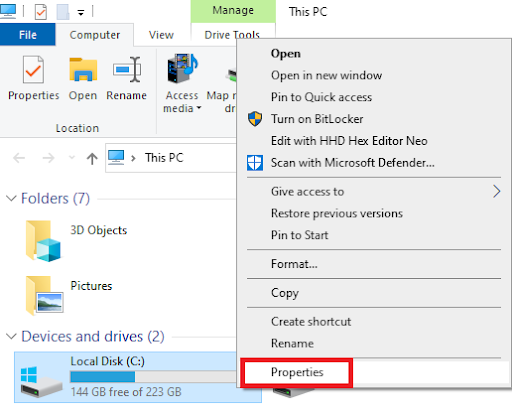
- Click on the Tools option. Then under the Error-checking box click on Check.
- After clicking on Check, a dialogue box appears, then click on the Scan option on it, and the scan process will begin.
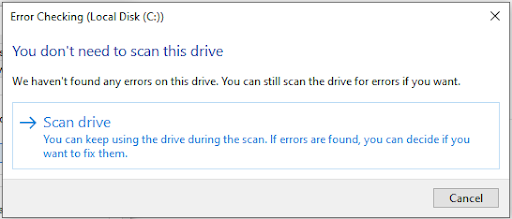
- You can fix the errors if you find any.
If you haven’t found any errors in your Hard Drive and are still unable to load your OS even though your Hard Drive is working fine, you can proceed to the next step.
2. MBR Corruption
A master boot record (MBR) is a special type of sector in the boot at the very beginning of the partition, which loads the Operating System onto the memory within seconds. However, if the MBR folder becomes corrupted the message “Error Loading Operating System” will be displayed.
Steps to Fix “Error Loading Operating System” by Repairing MBR Corruption
Note: Please make sure you have the installation disk/drive provided by the manufacturer.
- Insert the disk/drive into your computer. After inserting the CD or USB drive, restart your system and boot from the installation disk.
- Press on the displayed key to boot your system from the installed drive.
- Then click on Repair your computer. Select Troubleshoot option.
- Open Command Prompt, then you need to enter the four commands provided below in sequence and press enter after each command and wait till each operation is complete.
- bootrec /FixMbr > bootrec /FixBoot > bootrec /ScanOs > bootrec /RebuildBcd
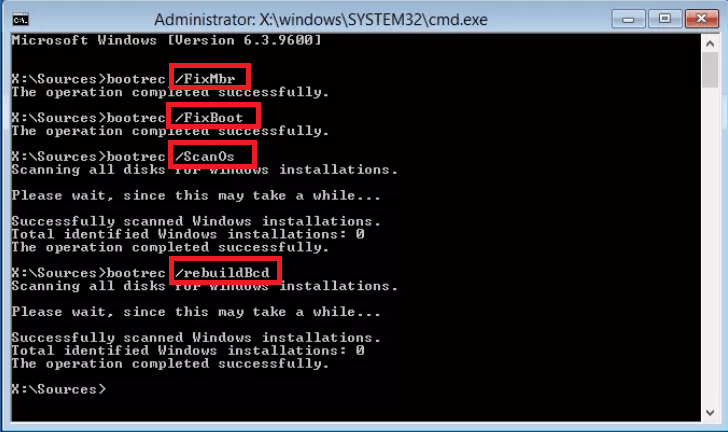
- Remove the installation disk inserted in your system and exit, Restart the system. This will fix the OS not loading issue.
If this didn’t fix the error then there is no corruption with your MBR, you should proceed to the next step.
3. Multiple Hard Drives Error
When Multiple hard drives are connected to your computer and the primary hard drive which has the operating system is not sequenced then the message “Error Loading Operating System” will be displayed. If multiple hard drives are connected to your system, you need to ensure that the hard drive which has your Operating System is sequenced in the boot.
Steps to Repair Error Loading Operating System by Fixing Multiple Hard Drives Issue
- Restart your system and press a specific key to get into your BIOS.
Note: Every manufacturer has their own set of keys to get into BIOS, visit the manufacturer’s website to get the Key
- The key to open the BIOS will be displayed on the first screen that will appear before loading the Windows logo. The key displayed on the screen will most likely be F2, F8, F10, F12, Esc, and Del.
- Press the specifically asked key and it will take you to BIOS setup. Next, go to the Boot tab and set up a boot sequence by pressing the prompted keys. Make sure that you set up the right drive as a bootable drive.
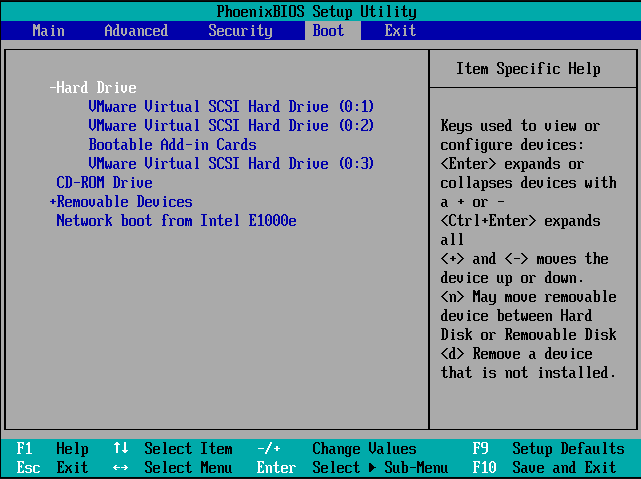
- You can now press F10 to save the changes and restart your system with a new boot sequence.
- After you change the boot sequence, there are chances that your HDD or SSD might not get detected. You can try to fix undetectable SSD in BIOS to make your system function properly.
If this was unable to fix this error then there might be a problem with your BIOS, please proceed to the next step.
4. Outdated BIOS
In rare cases, the lack of an update could cause compatibility issues with newer operating systems or performance issues. Generally, you won’t have any issue with the BIOS but in rare cases, some problems do occur and those few updates show up.
Steps to Fix “Error Loading Operating System” by Updating your BIOS to the latest version:
Note: You should always take extra care while updating your system BIOS, if you face any power failure or system crash during the upgrade process you will end up corrupting BIOS firmware.
- To update BIOS, first, you need to check the current version and model of your BIOS firmware.
- Go to System Information App, and Click on System Summary, the model and version of your BIOS firmware will be displayed.

- Then visit your computer’s motherboard manufacturer’s website and download the latest version of BIOS by searching the model of your version in the available list.
- Download the BIOS update and run it. Restart the system once the update is complete.
If this couldn’t fix the error then there can be some problem with your Operating System files, please proceed to the next step to resolve the issue.
5. Perform Startup Repair
Startup repair is a Microsoft Windows feature that can help you fix any booting related issues. Follow the steps below to do so,
- Insert the Windows installation CD/DVD on your Windows computer.
- Now select Next and then click on Repair your Computer.
- Now choose the Troubleshoot option and click on Advanced options and navigate to the Command Prompt.
- Now type the following command chkdsk X: /r and hit Enter. (here X is the drive letter, change the drive letter with your drive’s letter).
6. Corrupt Program files of the Operating System
When all the above methods fail to solve the error and the hard drive is also working fine, the only option is to reinstall the Windows Operating System to resolve this error. The message “Error Loading Operating System” will be displayed when your Windows OS has damaged or corrupted program files.
However, reinstallation of the OS can lead to data loss. You need to take a backup of your data before reinstalling the OS. In case you do not know how to reinstall the OS without losing your data you can refer to this article.
How to Recover your Lost Data due to “Error Loading Operating System”?
If you cannot take a backup of your data due to hard drive corruption, then you can use reliable data recovery software like Remo Recover to recover the lost data due to the error-loading operating system.
The tool is built with a Deep scan algorithm that can scan every sector of the drive to recover the lost data. The tool is compatible with all the Windows versions like Windows 11, 10, 8, 7, etc. This tool can recover more than 500 file types. Download the tool now and start recovering your lost files.
- Free Download For Windows
- Free Download For Mac
Review from Trustpilot:
Source: Trustpilot
First, you need to remove the hard drive from the current device and connect it to a different computer as an external drive. Then you need to follow the steps below:
Steps to Recover your Data from Hard Drive using the Remo Recover tool:
- Launch the tool, select the drive from which you want to recover data, and click on Scan.
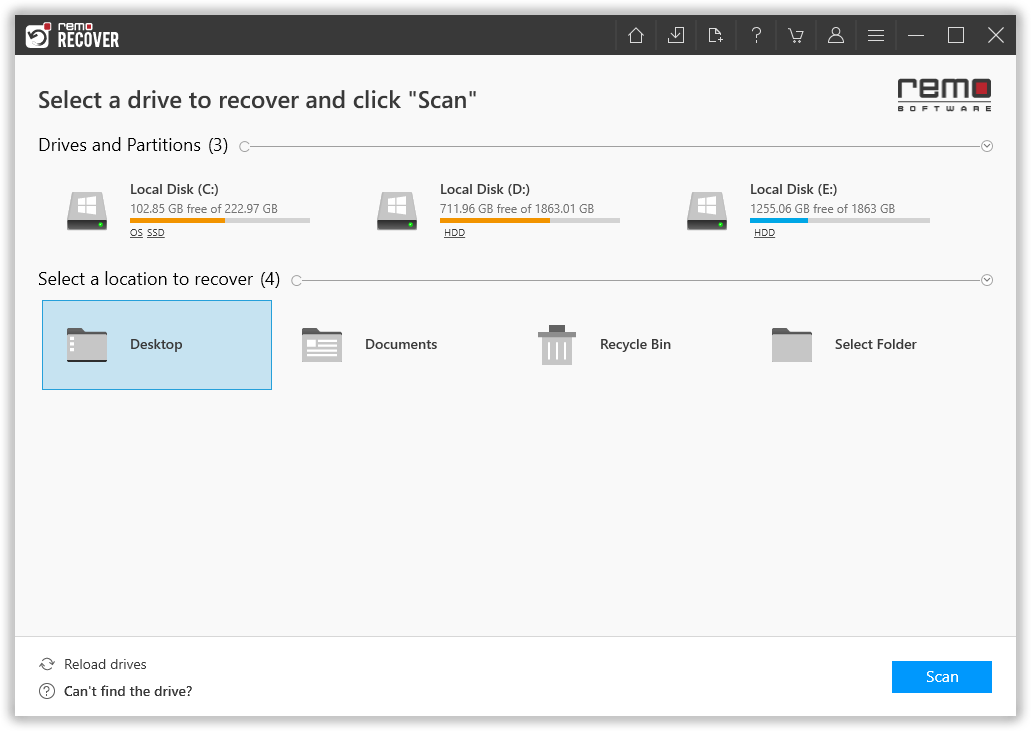
- After completion of the scanning process, recovered hard drive data will be displayed in Dynamic Tree View.
- Preview the recovered data to check the success rate of hard drive data recovery.
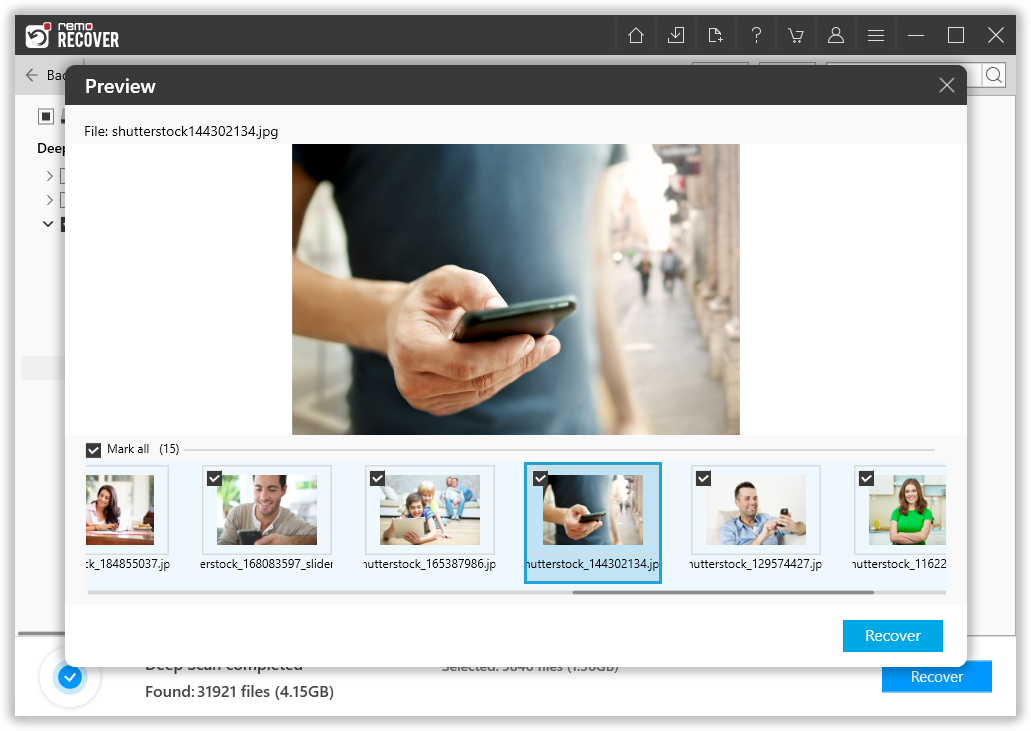
- If you are satisfied with the recovered hard drive data, save the recovered data to the desired location by clicking on Recover.
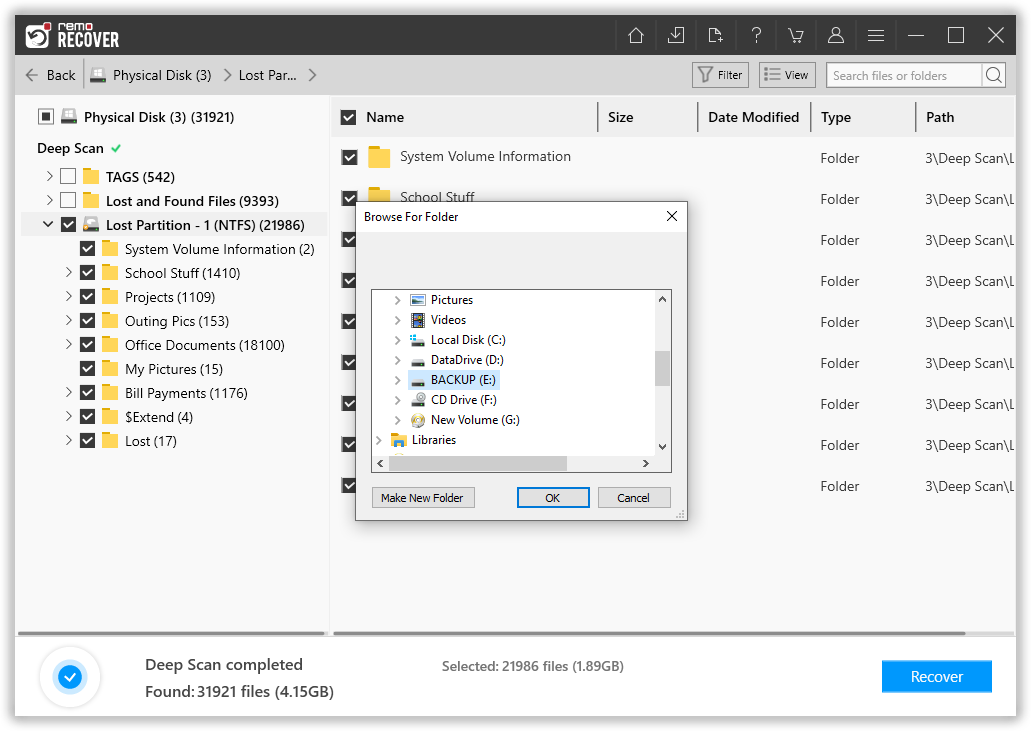
- Using the Save Recovery Session option you can keep the backup ready every time.
Conclusion
Try all the above-mentioned methods, this will be able to fix the “Error Loading Operating System”. If you cannot resolve the issue please visit your manufacturer service center. Please leave your queries in the comment section below.
Frequently Asked Questions
Why is OS not loading?
These can be the reasons why your OS is not loading:
* Due to hard drive failures
* Due to damaged MBR
* Due to multiple hard drive error
* Due to outdated BIOS
* Due to a problem with the OS folders
Can I Load the operating system on USB?
Yes, it is possible to load OS from a USB. The downside is that the system will run slower on a USB than on a hard drive.
How do I fix Windows 10 loading OS?
* Check your hard drive for any failures * Check if your MBR is not damaged
* Check if there are multiple Hard Drives on your computer
* Check if your BIOS is up to date
* Check if your OS folder is corrupted, if yes then please reinstall your OS

